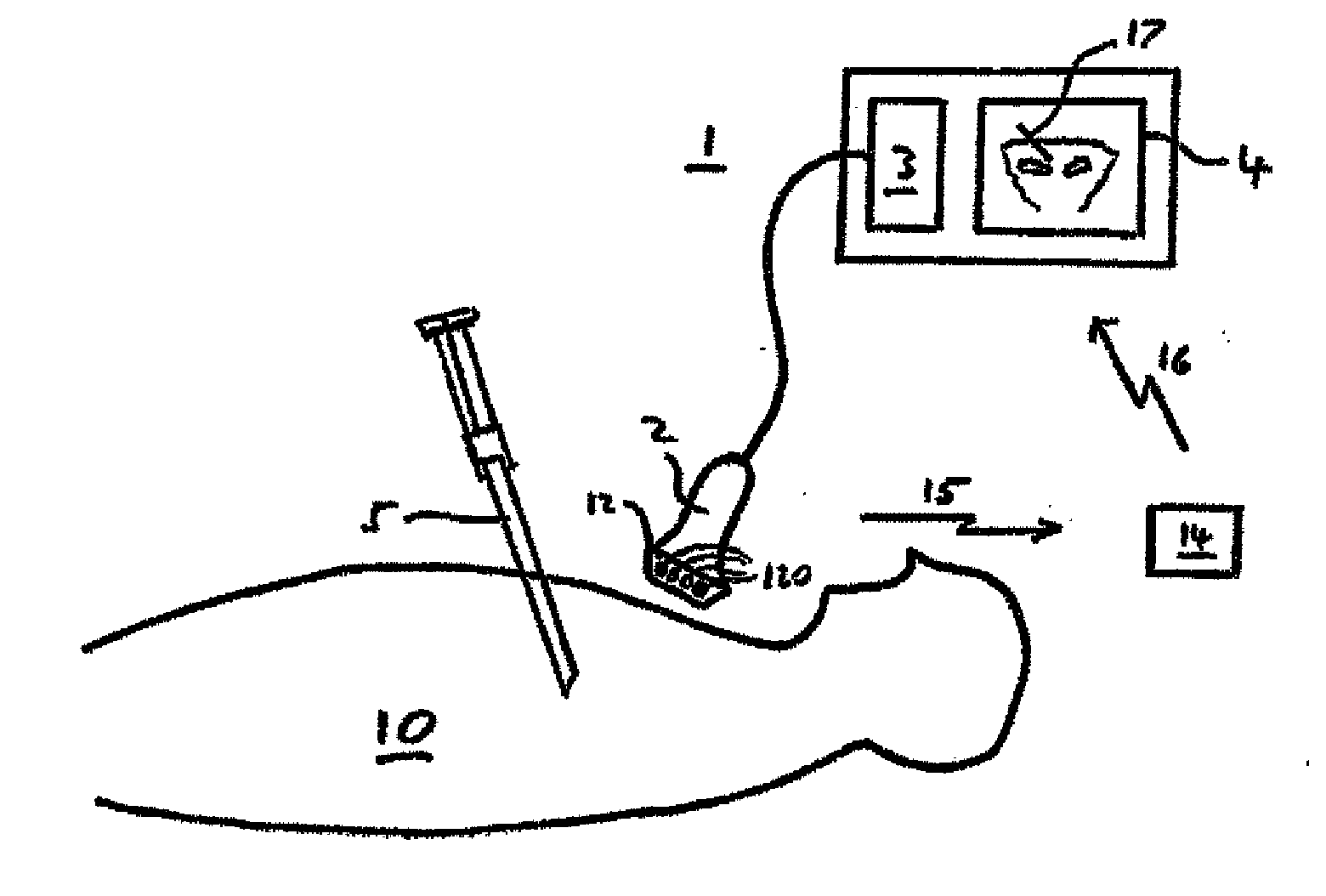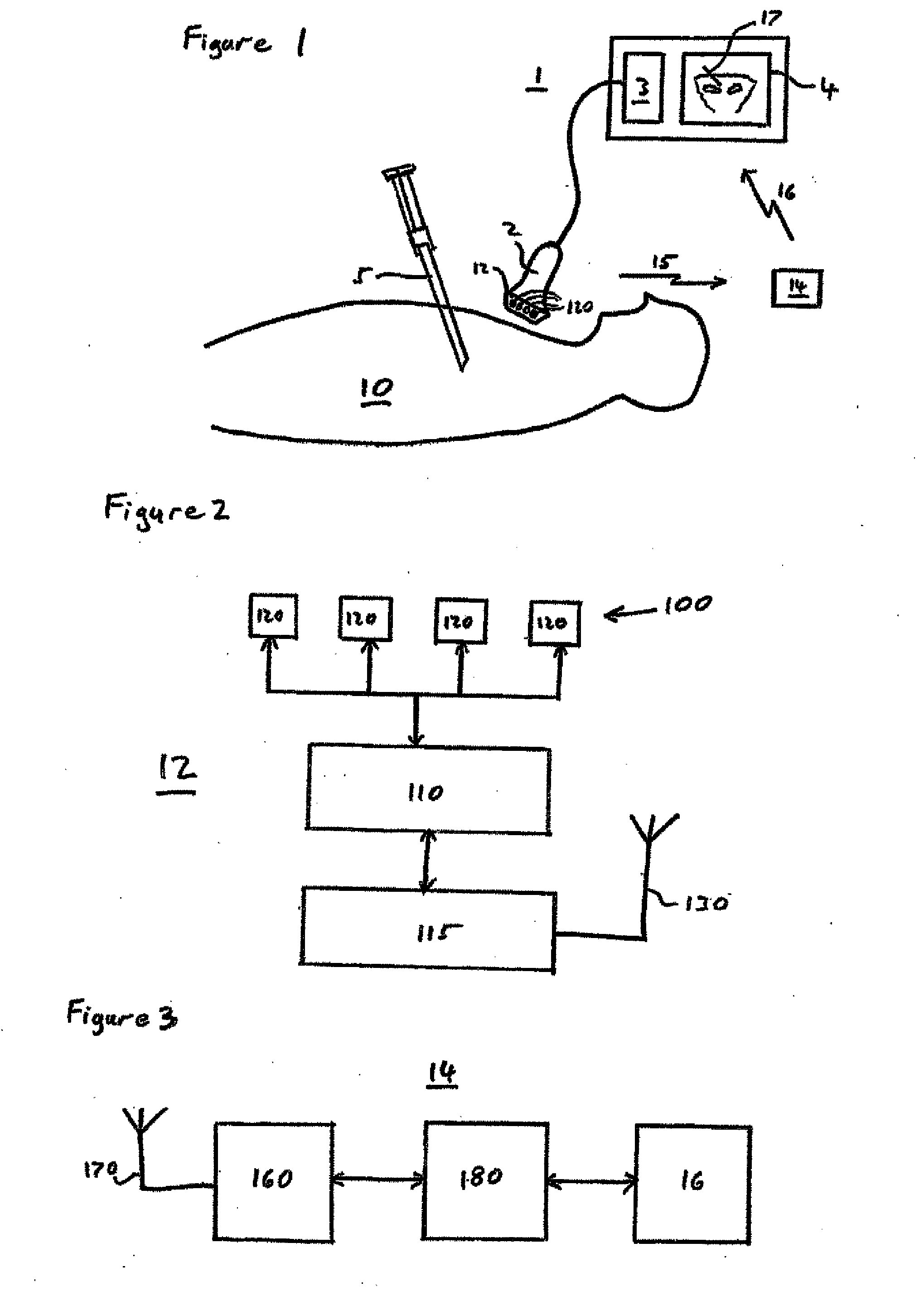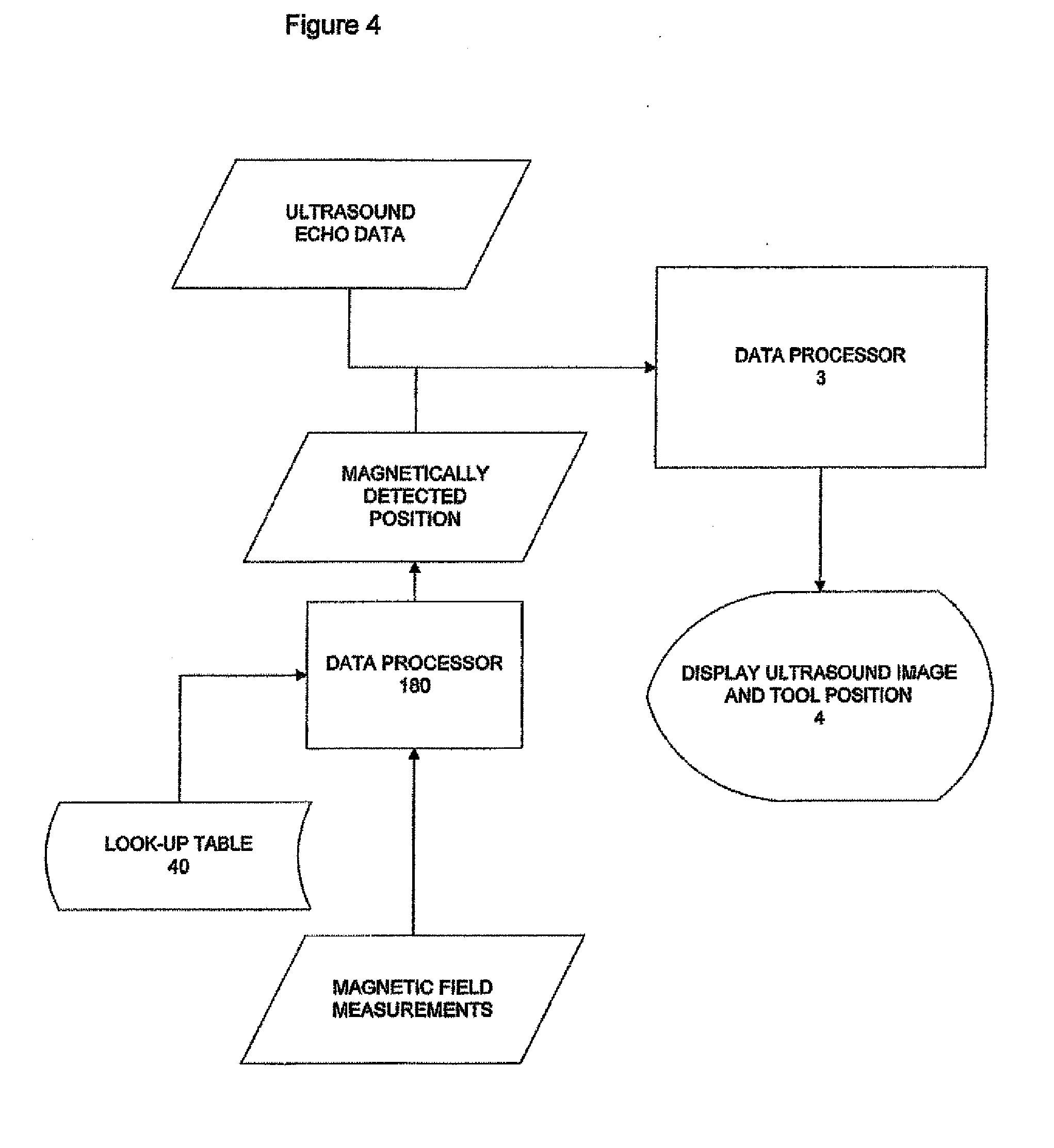System for ultrasound image guided procedure
- Summary
- Abstract
- Description
- Claims
- Application Information
AI Technical Summary
Benefits of technology
Problems solved by technology
Method used
Image
Examples
Embodiment Construction
[0033]As shown in FIG. 1 the system in this embodiment of the invention comprises an ultrasound imaging system 1 including an ultrasound transducer 2, processor 3 and display 4. The system also comprises a tissue-penetrating medical tool 5 such as a needle, stylet, catheter or cannula.
[0034]The invention uses magnetic position detection to track the tissue penetrating tool 5. Thus in this embodiment the tool 5 is magnetised and the ultrasound transducer 2 is provided with a magnetometric detector 12 comprising an array 100 of magnetometers 120. The detector 12 senses the magnetic field from the tool 5, together with the terrestrial magnetic field and any other background magnetic field, and the processor 3 is adapted to determine from the detected field the position and orientation of the tool 5 relative to the transducer 2. This magnetically detected position is then displayed on the display 4 together with the ultrasound image.
[0035]The ultrasound system 1 can be a standard two di...
PUM
 Login to View More
Login to View More Abstract
Description
Claims
Application Information
 Login to View More
Login to View More - R&D
- Intellectual Property
- Life Sciences
- Materials
- Tech Scout
- Unparalleled Data Quality
- Higher Quality Content
- 60% Fewer Hallucinations
Browse by: Latest US Patents, China's latest patents, Technical Efficacy Thesaurus, Application Domain, Technology Topic, Popular Technical Reports.
© 2025 PatSnap. All rights reserved.Legal|Privacy policy|Modern Slavery Act Transparency Statement|Sitemap|About US| Contact US: help@patsnap.com



